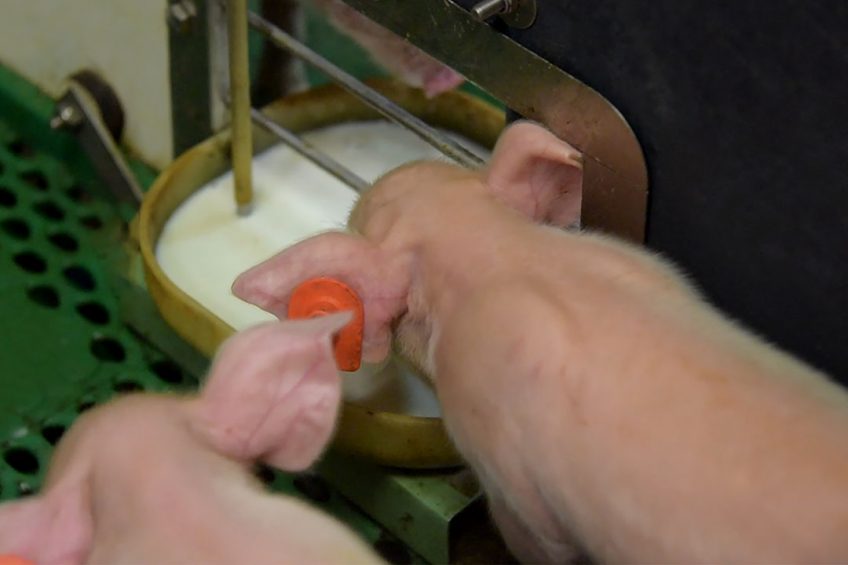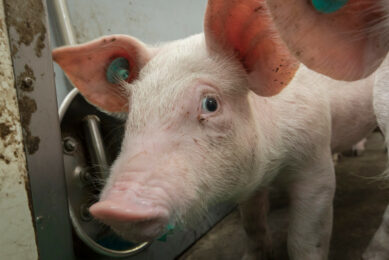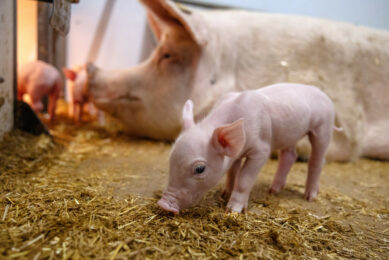The art of liquid prestarter feeding

The increasing prolificacy of modern sows is challenging our farmers. With increasing amount of piglets per sow, the post weaning mortality is increasing and piglets are entering the weaning stage lacking immunity and gut development, leading to significant financial losses. Further reduction of antibiotic use and the ban on medicinal zinc oxide use in the EU makes early life management more critical than ever.
Starting early with feed will allow to successfully overcome the weaning stage and pays of later in life by increased growth and reduced health issues. The early life feed management has made important progress as well and as farms are becoming larger, automated liquid prestarter feeding systems have found their way into the farrowing crates. Therefore a feeding range for these specific applications was designed; Babi®mel Care.
Importance of early feed intake and creating eaters
Sow milk is becoming limiting at quite an early stage after farrowing. Although the sow can produce more milk per kg of body weight compared to a cow, the milk provided to her offspring is not able to exploit the genetic potential of the piglets. Larger litters also mean that the bigger, often first born piglets, are the winners when it comes to teat order. Heavier, more vital piglets will select, soon after birth, their favourite teat offering them a lot of milk. Smaller piglets will get the leftovers, less producing and often the posterior teats of the sow, putting even more stress on their development. Research has shown that smaller piglets are, relatively to larger piglets, larger consumers of creep feed.
Although the fact that creep feed will help in the raising of these piglets and prepare them for weaning there is also a downside. Not only will the small piglets have consumed less sow colostrum and milk containing, among other things, nutrients and immunoglobulins, they will also acquire less prebiotic components found in sow colostrum and milk, which are essential to their intestinal development. Larger piglets on the other hand will keep drinking sow milk, making them less used to creep feed and therefore make them more vulnerable at the moment of weaning. They are not used to solid feed and their ingredients and have to deal with social and environmental stressors at that moment. This can lead to delayed feed intake after weaning, which has an impact on the gut health such as villi atrophy, gut barrier failure and pathogen overgrowth.
Creating the maximum amount of creep eaters and optimally prepare the gastrointestinal tract are therefore the main goals when it comes down to young piglet feeding (Figure 1). This way, all piglets big or small will successfully overcome weaning and perform well later in life.
Figure 1 – Pre- and post-weaning ADG of piglets that consumed or did not consume (but were offered) creep feed in the farrowing room (adapted from Shea et al., 2013)

Automated piglet feeding
Obtaining the objective described above is easier said than done. With more than 40 years of experience Nuscience is a pioneer in this topic and developed specific creep feed and prestarter ranges such as Babito® and the Babi range to obtain these goals. A lot of other management practices can create eaters in the farrowing house, such as the starting time, length (Figure 2) and the frequency creep feed is offered. Another way of stimulating eating behaviour is by differentiating with the structure of the feed such as porridge feeding.
Done in the past by hand, currently more and more through automated systems. Automated porridge feeding offers a lot of advantages. Not only will it reduce the farmer’s labour costs, it enables the piglet to eat and drink freshly made feed multiple times a day. However, it is not all roses, hygiene as well as feeding the right products at the right viscosity are indispensable to farm success. Nuscience launched the Babi mel Care range, a range of 3 products designed specifically for automated prestarter systems after more than one year of intensive testing in the field.
Babi®mel Care, the right product for each phase of lifeBabi mel Care range, containing 3 products, aims to create the maximum amount of eaters by offering highly digestible fat and protein sources, as well as a balanced mix of flavours and taste enhancers.
On top, sows are being relieved from over-demanding piglets and can start with recovering for their next parity. The complete range has been enriched with the START+ concept. This concept finds its origin in infant nutrition and is offering the piglet specific bioactive components miming the effect of the prebiotics found back in sow colostrum and milk. Extensive trials done at universities and research institutes and field experience is showing that START+ is developing the gastro-intestinal tract of the piglet in a very positive way. Proliferation of beneficial bacteria such as lactobacilli and bifidobacteria as well as improved villi development and increased gut barrier function are highlights of START+ effects in newborn piglets, resulting in better growth and health. Technical features characterising the complete Babi mel Care range are the perfect solubility, pumpability and stability in all types of automated prestarter feeding systems. This leads not only to optimal intake and growth of the piglet but also to increased comfort for the farmer not having to worry about sedimentation or clotting for instance. It can be concluded that accurate farrowing feeding management combined with the right products offering the right nutrients at the right time will make automated porridge feeding a success in your farm. For more information click here |
Author: Bart Matton, Product Manager Swine, Royal Agrifirm Group











